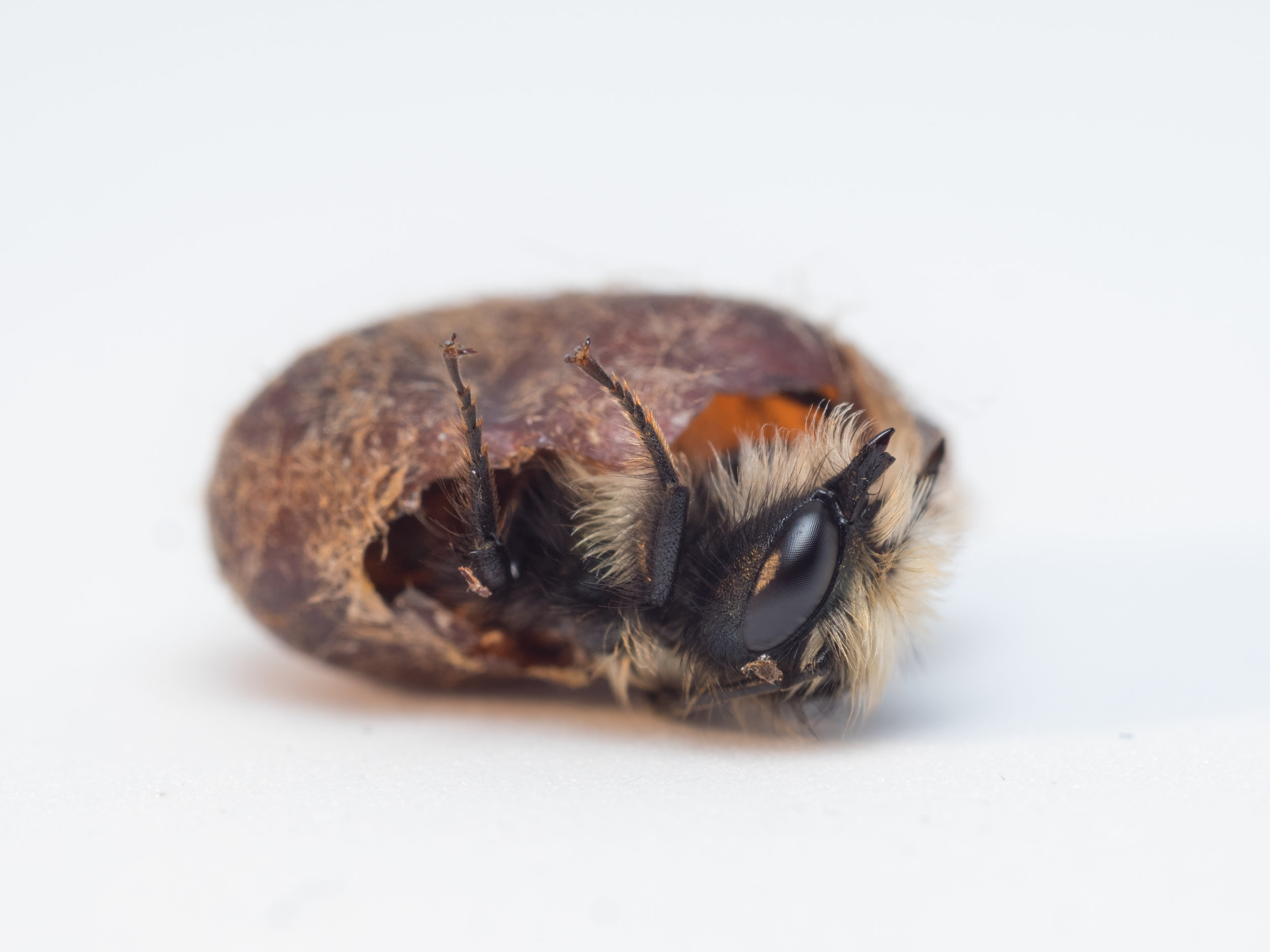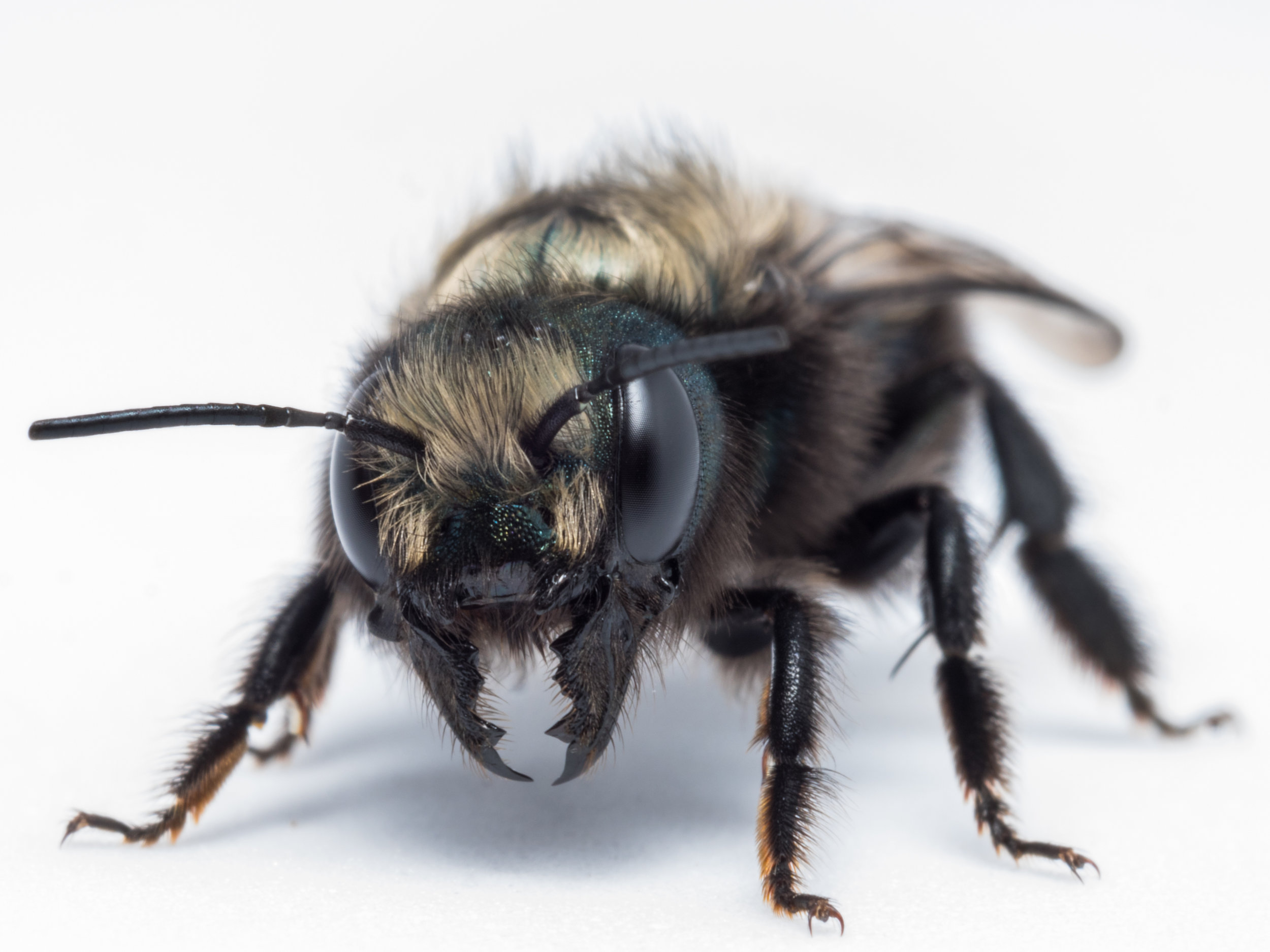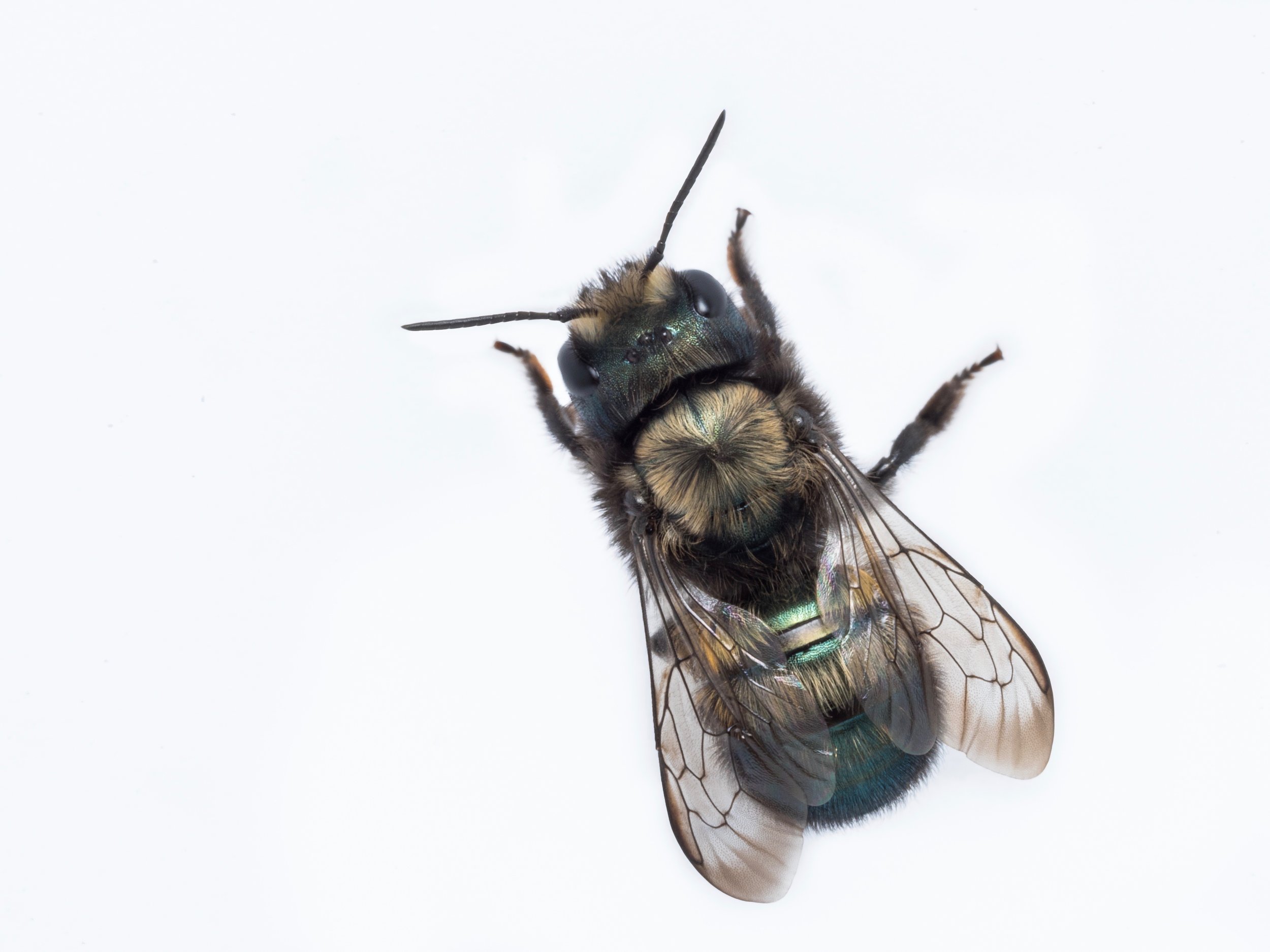Meet the blue orchard mason bee! These little blue bees are North American pollinating powerhouses who do a lot of heavy lifting on orchard tree pollination in early spring.
Scientific name: Osmia lignaria (Western subspecies - Osmia lignaria propinqua; Eastern subspecies- Osmia lignaria lignaria)
Family: Megachilidae
Species range: Osmia lignaria propinqua - west of the Rockies; Osmia lignaria lignaria - east of the Rockies, down into the mid-Atlantic states. Not present in the Gulf states or Florida due to the high winter temps that do not allow them to complete their life cycle.

Nesting habits: They are solitary tunnel nesting bees and will reuse holes drilled by other insects or animals to make their nest cavity. Artificial nest sites can be provided via cardboard tubes, natural reeds, or wooden nesting trays. Here is more information on creating habitats for tunnel-nesters!
Females will collect pollen and nectar from surrounding forage and mix the two to form a pollen ball, on top of which she will lay an egg. She will then seal the chamber with mud, hence the name “mason bee”. The larvae will eat through their pollen provisions through spring and summer, molting several times until they spin a cocoon and pupate through fall. The fully formed bee will remain in its cocoon until it emerges the following spring.

Preferred forage: Osmia lignaria is a prized pollinator of orchard fruit trees such as apple, cherry, plum, pear and many others! They will also feed on the blooms of blueberries, raspberries, and other early spring blooming trees and plants.
Active season: Adult bees are active in early spring when daytime temperatures average 55℉. Males emerge first and are active for only part of the season, while females are active throughout spring into very early summer.
Fun fact: Osmia lignaria males have hairs lining the bottom of their faces, resulting in an adorable bee mustache.

